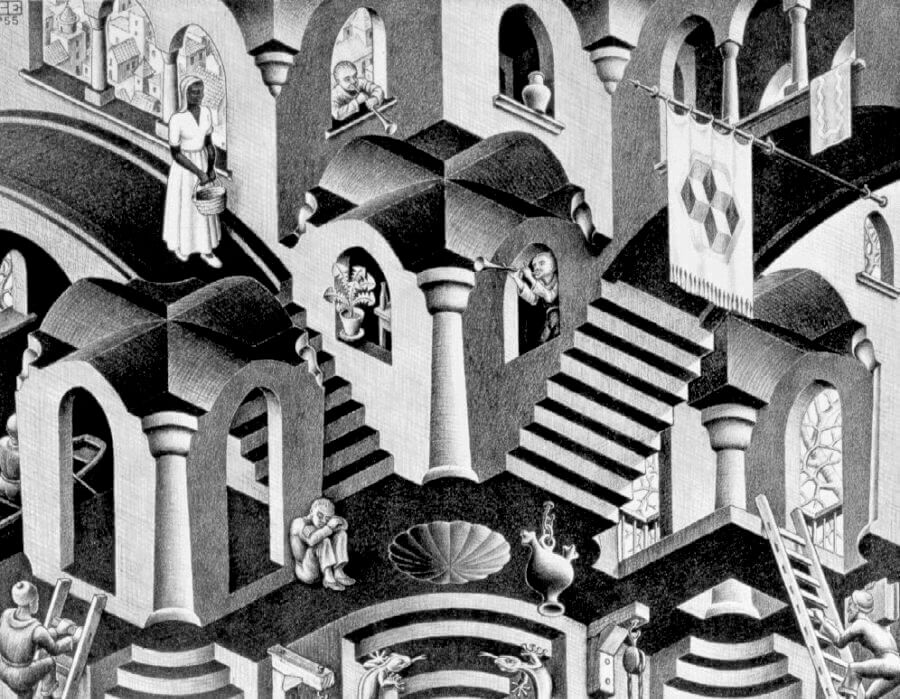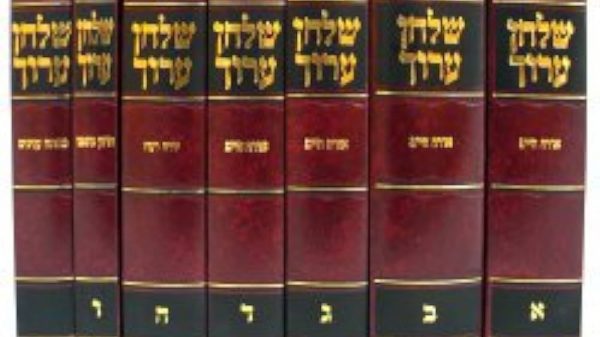Click here to download PDF
The Mirrors & the Memories
In this week’s Parsha (38:8) “and he made the “Kiyor” and it’s base out of copper from the mirrors…” Rashi bring the Chazal that Moshe did not want to take these mirrors which the women used to beautify themselves because they are made for the purpose of arousing the Yetzer Harah. Hashem commanded him to accept the mirrors because they are dearer to Hashem than all other things donated for the Mishkan. These mirrors were used by the Jewish ladies to arouse their husbands who were exhausted and broken from the hard work in Egypt. They would go out to the fields with food and drink and compare themselves to their husbands in the mirrors to force the husbands to realize their beauty and have relations with them and thus perpetuate the Jewish people. These mirrors were later used to make the “Kiyor” which brings peace between man and wife. When a woman is accused of being a “Sotah” the water from the “Kiyor” is part of the ritual to clarify the situation and exonerate her. Did Moshe not know that this was the history of these mirrors? Moshe never wondered how the Jewish people miraculously expanded in Egypt despite the men being broken and exhausted? Isn’t all jewelry meant to make a woman attractive to a man? Moshe had no problem accepting all the other jewels including the “Kumaz” that has far more erotic connotations than these mirrors! I propose that it’s just the opposite – Moshe knew full well what these mirrors were used for and that’s why he did not want to accept them! They would remind everyone of the event of how the women used those mirrors to arouse their husbands. Hashem told him to accept them because that’s what perpetuated the Jewish people. Moshe should have already known that simple fact, as that’s what happens and that explains why the Jews didn’t go extinct. How do we understand Moshe’s initial perspective was and what exactly did Hashem teach him?
What’s complicated about Money?
This week is also Parshas Shekalim. It is interesting to note that in parshas Ki-sisa and immediately following the command to give to “Machatzis HaShekel” is the command to make the “Kiyor”. Rashi on the pasuk “this they should give….” (30:13) brings a Midrash that Hashem showed Moshe a coin of fire and said, “like this they should give”. We could understand why Hashem had to show Moshe exactly what the moon has to look like to be considered the beginning of the month when declaring Rosh chodesh. We understand that the menorah was a very intricate piece of art with “cups buttons and flowers” so Hashem had to show him what it’s supposed to look like. Why did Hashem have to show him what a half-shekel coin looks like? It’s simple! Its money! If Moshe really did not know what that coin was, He shouldn’t have shown him a coin of fire, He should have shown him an image of the coin itself! What was difficult for Moshe and what was explained by showing a “coin of fire”?
The Machatzis HaShekel & the Omer
The Gemara (Megilla 13B) tells us that Hashem knew that in the future Haman would offer an exorbitant sum of money for the right to kill the Jews. Therefore, Hashem commanded the Jews to give their Shekalim ahead of Haman and the Gemara invokes the Mishna “on the first of Adar they announce reminders to give the shekalim” as a fulfillment of the idea of our shekels come before Haman’s money. That announcement may be two weeks before Purim, but we know the halacha is that the shekel must be given by Rosh chodesh Nissan which means it could be given even after Purim! How is the reminder announcement to give the half-shekel considered as if we gave our Shehalim before Haman’s?
The half-shekel that we gave is not the only thing that outweighed Haman’s money. Haman was hung on the second day of Pesach when historically we brought the omer. The gemara (Megilla 16A) says that when Haman came to pick up Mordecai to give him the ride on the king’s horse he had found Mordechai teaching the laws of the omer and the “Kamitza” to his students. Haman asked what they were studying Mordecai told him about the omer and that it was just a fistful of barley flour. Haman said your fistful of flour outweighed all my money! How is the omer a countermeasure for Haman’s money? What is the common denominator between omer and “Machatzis hashekel” as both are countermeasures to Haman’s money?
Unveiling the Hidden Good
The Gemara (Yoma 69B) says that even before institutionalized prayer Jews always borrowed the phrase of Moshe Rabbeinu to pray to Hashem as “HaGadol”-the big, “HaGibor”-the mighty, and “HaNorah”-the awesome. Then the first Beis HaMikdash was destroyed we were sent into exile and the Goyim were oppressing us. Daniel asked where is Hashem’s “Gevurah”- might? He stopped saying “HaGibor”! Yirmiyahu saw the goyim are dancing in where the Beis HaMikdash used to be and asked where is Hashem’s “Norah”-awesomeness? He stopped saying “HaNorah”-. Then came “Anshei Kenesses HaGedola” and restored saying “HaGibor”-and “HaNorah”-saying just the opposite: “those are His might and His awesomeness. He is displaying might by not destroying the goyim and even though they’re picking the Jewish people and the awesomeness of Hashem is displayed by the miracle of the Jewish survival as a separate people in exile amongst other nations that want to destroy them.
How did “Anshei Kenesses HaGedola” come to this realization that Daniel and Yirmiyahu could not see? Rav Gershon Henoch of Radzin explains that it’s because “Anshei Kenesses HaGedola” lived through the miracle of Purim! The message of Purim is seeing Hashem’s goodness and greatness in the setbacks that we would call “bad” and a “vacuum of Divine revelation”. My Rosh Yeshiva Maran HaGaon HaRav Yaakov Weinberg ZT”L further explained that Hashem runs the world with two major modes of conduct one is called “He’aras Panim” The shining face and in that mode of conduct good is dominant and apparent and what is going on is straightforward, understandable, and easy to appreciate. That mode of conduct is dominant at the time when we are in our homeland with a Beis HaMikdash standing. There’s the other mode called “Hester Panim”– where Hashem is hiding himself and runs the world leaving himself hidden which creates things that are “unholy” or even worse: what we call “evil”. The mode of conduct of “Hester Panim”– the hidden face is called that because of course it’s Hashem doing it with the same agenda that’s in everything He does: it’s for our good and to bring the world to all-encompassing perfection except in that mode of conduct it could look like evil is dominant despite Hashem doing everything consistent with his agenda of bestowing goodness, because He is hidden. This mode of conduct is dominant at the time of exile. The Gemara (Chullin 139B) says that an allusion to Esther in the Torah is (Devarim 31:18) “Anochi Haster Astir panai”- “I shall surely hide my face……” the story of Esther which derives from “Hester”- hidden is to teach us that when Hashem’s “face” is hidden and it’s not obviously apparent that everything is for the good it is still Hashem doing it and therefore it is good, just that it’s hidden. That’s the message of Purim: even within exile, even within the terrible tragedy of a Jewish woman being held captive and forcibly made the wife of a gentile King, that is all from Hashem and it is all ultimately for our good even as it is happening. Everyone believe that at the end of time everything will be good but what’s harder to understand is that it’s not that in the future things will be good but now they are bad, but rather in a hidden way things are good even now(!) and these bad things are pieces of a puzzle of a picture of goodness. In the words of my Rebbe Maran HaGaon HaRav Moshe Shapira ZT”L Purim taught us that “Hester Panim”-the hidden face is also a face of the Divine Providence! My Rosh Yeshiva Maran HaGaon HaRav Yaakov Weinberg ZT”L explained that Daniel and Yirmiyahu saw the Beis HaMikdash standing and were accustomed to the mode of conduct of “He’aras Panim” so from their standpoint they can only view the destruction of the Beis HaMikdash and downtrodden state of exile as “not good”. “Anshei Kenesses HaGedola” lived during the Exile in the mode of “Hester Panim” and had the educational experience of Purim to learn to appreciate the hidden goodness of “Hester Panim”
He’aras Panim vs Hester Panim
All of reality is weaved out of these two modes of conduct of “He’aras Panim” and “Hester Panim”. Everything is a composite of these two modes, just in varying degrees. In the spiritual and all that is Holy the “He’aras Panim” is dominant and in all that is physical an unholy the “Hester Panim” is dominant. This physical realm with the laws of nature are primarily derived from “Hester Panim” and indeed that is why Hashem is hidden and there is perceived room to deny Hashem’s role and to just attribute everything to “Teva”– nature, as if the laws of nature run the world. This mode of conduct allows the cheaters to prosper temporarily but not ultimately, but it’s a big lie because Hashem’s plans are always being executed even at the moment. The whole difference is whether we can see it that way or not.
Amalek cannot deny “He’aras Panim” and when miracles happen or when the spiritual is revealed there’s nothing for him to say! Amalek’s room to operate and to spread his propaganda is in the realm of “Hester Panim” and that is “what’s missing from the Divine name”. So long as Amalek is around the letters “Vav” and “Heh” are missing from the throne of Hashem and we are taught that these letters “Vav” and “Heh”, “Vav” -6 and “Heh” the 7th are the 7th principal forces of nature and “Amalek takes that away from the Divine name” meaning to say Amalek thrives on the illusion that they are not from Hashem. Amalek keeps Earth disassociated from heaven.
There is another law of nature equally as strong as the laws of nature measured by physics, the laws of economics and the perception that money is power. By no coincidence the word for coin is “Matbe’ah” from the same root as the word “Teva”- nature. The common denominator between the two is that they are “imprinted” or “embedded” on reality. They seem like programs that “just are”. They seem dominant in the illusion of Hashem not being involved. Amalek’s outlook on nature is the same as his outlook on money. In his worldview, he who has the money has the power.
Mind over Money
Hashem is the source of everything, including the money! You have the money that you have as a pawn in Hashem’s game! Through you that money will pass to exactly where he wants it! With that perspective we realize everyone is actually equal in the eyes of Hashem, the rich and poor alike! We are all equally pawns of passing resources through us for them to get wherever Hashem wants them. This is the message of the “Machatzis HaShekel” that rich and poor give exactly the same. If money were power the rich should be exercising their power and influence by giving more and the poor who are less fortunate should be giving less, but that’s not the case! “Machatzis HaShekel” went to finance the “Korbonos Tzibur” which shows everyone is equal in the eyes of Hashem. Everyone one is positioned on Hashem’s map of reality to pass whatever resources need to be passed along according to Divine plan. Everyone will be graded and rewarded on their job given to them by Hashem. “Machatzis HaShekel” cuts to the core of the essence of money and brings out the understanding that at the core everyone’s equally just doing their job.
That physical could be used to service the spiritual is obvious. That money can be used to do good things is obvious. Moshe’s difficulty was that it’s not just a Mitzvah to buy Korbanos for the public where the money the will be a means to that greater end. He was troubled by the fact that the giving of the “Machatzis HaShekel” is a Mitzvah in its own right! Seemingly money is at the core of all greed! There’s another idea alluded to in the word “Matbe’ah” from the root “Teva”. “Teva” also means to sink! Money sinks you! The pursuit of money “pulls people down”, and Moshe can’t understand how giving the money itself is a Mitzvah and not just a means towards a mitzvah. Hashem showed him a coin of fire. Fire does not sink, it rises! Money itself can rise and be in itself spiritual, and not be used the way Amalek uses it.
Inverse Perspectives
To go one step deeper: Coins are pressed and hence the word “Matbe’ah” because it’s imprinted. We know that the imprint is an inverse of the press that minted it. What on the press sticks out in the coin will be indented and what in the press is indented on the coin will be raised! You could actually deduce the spiritual from the physical -it’s the inverse! The biggest “hole” in physicality is actually indicative that the part of the press that pressed that hole is what’s most protruding which means that greatest vacuums in reality of holiness are actually an expression of extreme holiness! The greatest Holiness is hiding in those places! That is the relationship between Purim and Yom Kippur! We know that their Yom Kippur is “K’Purim” -a day like Purim, only nearly as holy as Purim. Purim and Yom Kippur are like a coin and the press, they are inverses of each other. We prepare for Yom Kippur by eating on the 9th of Tishrei and then fasting on the 10th and it’s a day of pure spirit. We prepare for Purim by fasting and then the day of Purim is pure indulgence. The vilna gaon tells us that these two days are two halves of one whole like any Yom Tov that has to be half for Hashem and half for you. The Yom Kippur half is for Hashem as it’s a day of prayer and repentance and the Purim half is for us. They fit together the way a coin fits so smoothly back into the press that pressed it like pieces of a puzzle fitting together! The Supreme physicality of Purim is an impression of the super spirituality of Yom Kippur! “Anshei Kenesses HaGedola” were able to see in the oppression of the exile an impression of the might of Hashem and in the fact that the Jewish people did not have a Beis Hamikdash anymore nor a Homeland as an impression of Hashem’s awesomeness!
Bursting Amalek’s Bubble
The main way we overcome the power of Amalek’s money is to put money in its proper perspective! To have money isn’t power, it’s to be a pawn in Hashem’s game! That’s the message of “Machatzis HaShekel” and the power of “Machatzis HaShekel” is in the message! We need to hear parshas Shekalim which is the correct perspective on money before Haman gives his money and that is what enables us to overcome the effects of the perceived power of Haman’s money!
The Maharal brings a Midrash from Parshas Emor to explain the significance of the omer and how it overcomes Haman’s money. The Midrash says that Hashem makes the sun shine, the wind blow, and the crops grow, and all that we “pay him” for it is this fistful of barley which is the Korban of the omer. The Midrash is saying that the omer, which comes from barley which is generally animal food, a creature of nature, is all about acknowledging that nature comes from Hashem also! That’s the opposite of Amalek who want to take advantage of Hashem being hidden in nature to claim that nature runs itself. That’s the secret behind why Haman was hung on the day that we brought the Omer in the times of the Beis Hamikdash. Haman himself said “your fistful of flour outweighed all my silver” – because the message of the omer is the laws of nature which include the laws of economics, the market, and a perception of the power of money are all from Hashem! Omer pierces the illusion that Amalek capitalizes on (pun intended) and Haman himself realized it!
Mirror Image of the Yetzer Hara
Moshe knew the whole story of the mirrors and of course he knew that it led to the wonderful outcome of the perpetuation of the Jewish people despite the terrible enslavement and systematic annihilation that was going on in Egypt. When looking at the mirrors that the “Kiyor” was constructed from what will people be reminded of? What these mirrors were used for – which was to arouse Passions! No one is going to be thinking about the good outcome that came from it, they’ll just be thinking about what the mirrors were directly used for, which is total totally contrary to what the “Kiyor” symbolizes! The “Kiyor” is about washing and purity and even in its function of providing water for the Sotah to clarify that she is pure and did not follow lust! Moshe feared people will be thinking about lust when they look at it. Of course everything in the end is good because Hashem’s agenda to move things to all-encompassing perfection cannot be derailed! But what will the people be thinking when they actually look at the “Kiyor”? They will remember what it was used for in Egypt and they won’t be thinking long-term, they’ll be thinking about the Yetzer Harah that it aroused! Moshe lives in a world of “He’aras Panim” which was the mode of conduct in the desert in general as they lived a miraculous life and not a natural life while in the desert. Moshe himself can visit Heaven regularly and go without food and drink when he’s there. He didn’t live in “Hester Panim”. Hashem says he wants to get a message across: The mirrors with which the women aroused the Yetzer Harah in the service of the good at that very time! That’s why it is actually in the “Kiyor”, the symbol of purity and the opposite of the Yetzer Harah to tell you that the Yetzer Harah is in service of the good! We have to realize that the things that we call “bad” are “hidden good” because they’re equally part of Hashem’s agenda. The Jewish people are the arch enemy of the Yetzer Hara, after all we’re trying to vanquish him! Chazal tell us the Yetzer Harah tries to ensnare Jews even more than Goyim because it plays the role of being “anti-good” and therefore he ensnares Jews who are “Good” relative to Goyim. And by Jews, “the greater the person the greater his Yetzer Hara” because the Yetzer Hara wants to take down the good and the better the person the more he’s a target! That’s just the situation as it looks, but the Yetzer Harah is actually in service of the good because he makes our lives meaningful, he gives us a job to do, in short: he’s just a pawn in Hashem’s game. This message emerged with these mirrors! The Yetzer Hara which is seemingly so anti the Jewish agenda and “wants” to destroy them and entices goyim to do as such(!) actually saved the Jewish people from Extinction!! Hashem wanted to bring out the message that the Yetzer Hara with all its impurity is in the depth of it in the service of purity! It comes from the mode of “Hester panim” where that truth is hidden, and the revelation of that hidden truth is the essence of Purim and starts from parshas Shekalim
Good Shabbos.









